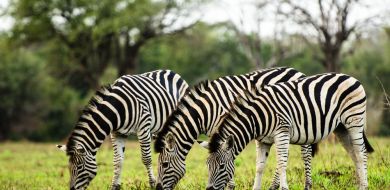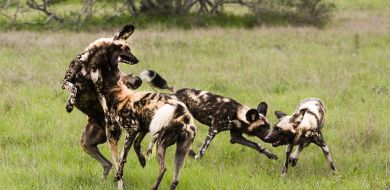Sabi Sabi Wild Facts: The Steenbok Part 1
on Dec 15, 2014This tiny little antelope always manages to draw out a long "aaaahhhhh" from our guests as they all assume it is a baby. In fact when fully grown the steenbok, (also referred to as "steenbuck"), is only about 60cm at the shoulders. They are highly territorial and can have territories as small as 900 square metres, which is only 30m x 30m. Such a small territory will have to contain some high quality food. Steenbok will eat anything from leaves and grasses to berries and seeds. If their food sources are high, steenbok may pair up for life, but in most cases these antelope are solitary creatures only coming together when they need to mate.
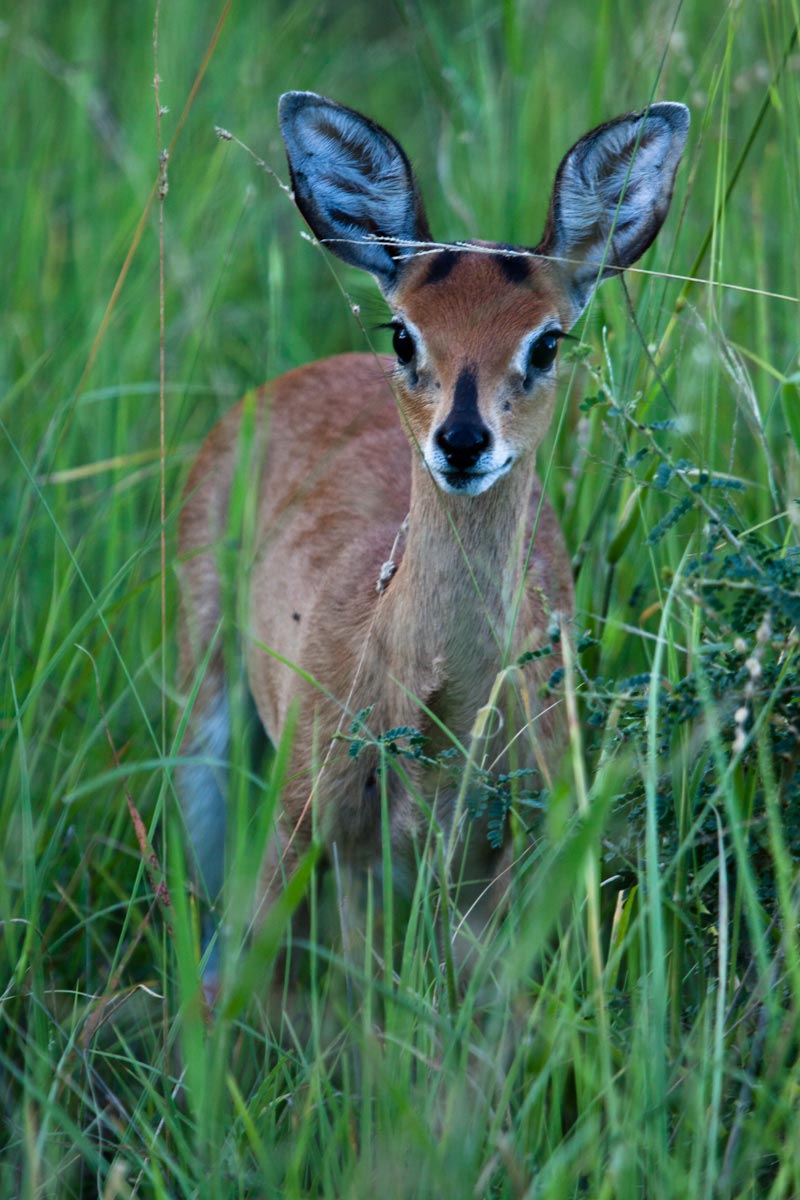
Once they have mated and the female gives birth, the young fawn will lie in the long grass for approximately 3 months with mom only moving it to get the scent trails away so that predators have a tough time finding them. Even the adults will use hiding as a form of defence, only springing out of the bush at the last moment to make a break for it.
Steenbok are also the only antelope to have toilet etiquette - they dig a hole in which they will urinate or defecate. Once finished they will cover the hole up which is useful for 2 reasons; firstly it retains the moisture and scent for longer meaning they have to mark their territory less. It also leaves less of a visual marker for predators, which is especially important seeing as they have such small territories.
Sabi Sabi Wild Facts: The Steenbok Part 2
The Steenbok (Raphicerus campestris) is a small "dwarf" antelope, with an average weight of around 12kgs (26 lbs) and a shoulder height of a mere 45 - 60cms. They are a beautiful golden brown colour, and have very distinctive, overly-large ears which look completely out of proportion to their petit heads. Only the males (rams) have horns, which are smooth, straight and very sharp.
The species is abundant and common, and can be found throughout Southern Africa, in semi-arid countryside, as well as in savannah bushveld and grassland. They favour areas where they can gain cover and camouflage from shrubs and grasses and are seldom seen in rocky or forested areas. They move and feed actively throughout most of the day, seeking shade and shelter when temperatures rise. A steenbok standing motionless in the shadow of a bush is almost invisible.
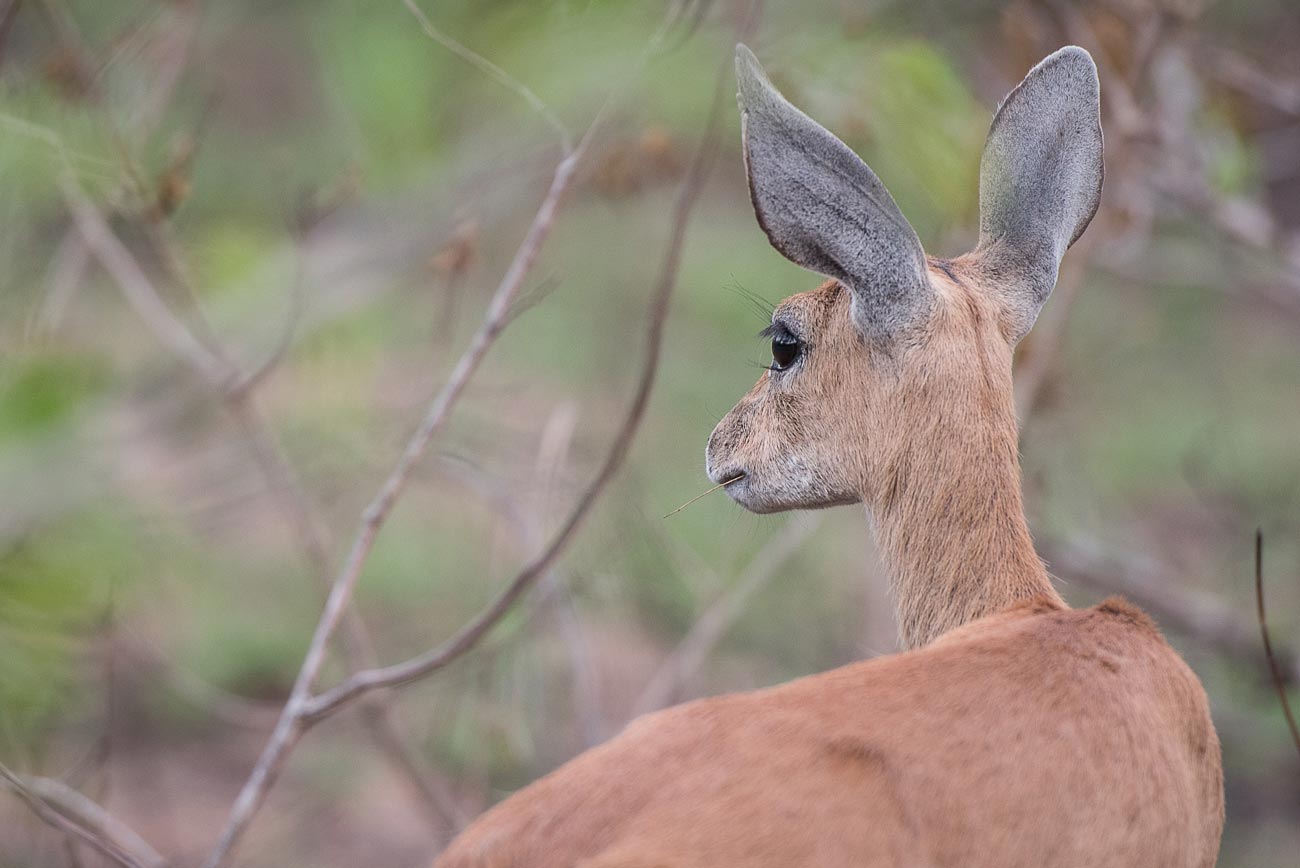
The predators of the little steenbok are abundant. They are hunted by all of the cat species, as well as wild dog, jackal and karakul, and have even been taken by pythons and large eagles.
Steenbok have good eyesight and excellent hearing, and are adept at spotting danger. Their defense mechanism is to stand still, hiding for as long as possible. If this ploy isn't successful, they will flee, running in a zig-zag pattern to escape the predator chasing them. During their dash to safety, they typically stop periodically, look back and try to hide again by freezing. They have been seen to escape and hide in abandoned dens and burrows.
Steenbok are generally herbivores, browsing on low-level vegetation such as young leaves, flowers and shoots of various plants. They have the ability to survive for long periods of time without water, getting all the moisture they need from food. When necessary, particularly in the dry months, they will use their sharp hooves to dig up bulbs and tubers for their moisture content.
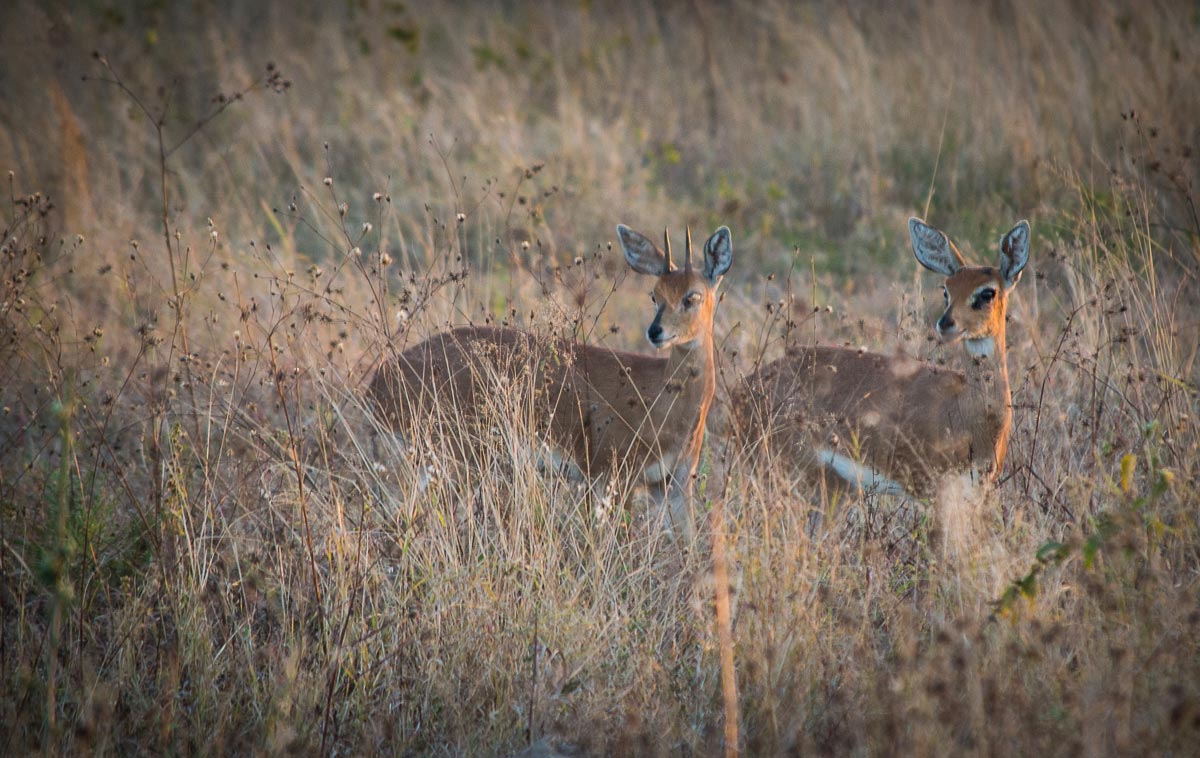
Although it is believed that Steenbok pair for life, the male and female of each pair live a fairly solitary existence within their large territory, which they will both defend. They come together only to breed, and after a gestation period of approximately 5 ½ months a single fawn is born. The baby steenbok is able to stand a mere few minutes after birth, but although able to run a follow the ewe within the hour, it will remain hidden by its mother for a few weeks. During that time she will return to the youngster several times a day to clean it and allow it to suckle. At Sabi Sabi Private Game Reserve, most steenbok babies are born in spring and early summer.
